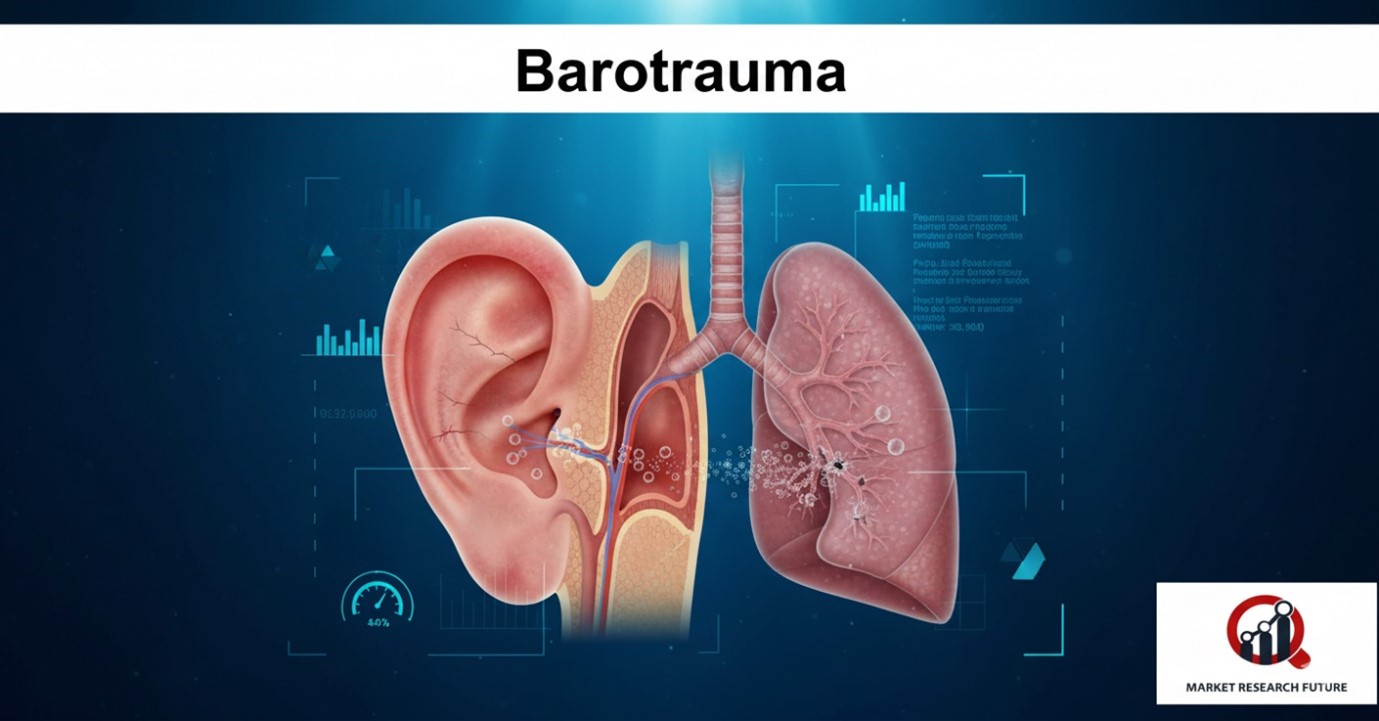Barotrauma - What it means to you

Barotrauma Industry Brief:
The modern fleet of ships that go to sea is built to work in all kinds of weather, from calm seas to strong storms. This resilience is important for global trade and offshore industries, but it also makes it harder to keep workers healthy and safe. Barotrauma is a condition that can affect the ear, sinuses, or lungs when pressure changes suddenly. It is one of the most dangerous things that offshore workers face.
Barotrauma is a real risk for people who work in the oil, gas, and shipping industries offshore, not just a medical term. It can cause decompression sickness and injuries related to pressure, which can stop work, put workers' safety at risk, and even have long-term health effects. To deal with barotrauma properly, people in the maritime and energy industries need to be aware of it, get treatment quickly, and come up with better ways to stop it from happening.
Comprehending Barotrauma
Barotrauma happens when the pressure inside the body doesn't match the pressure outside of it. It most often affects the middle ear, which can damage the eardrum (tympanic membrane). This damage can make your ears hurt, make it hard to hear, make you feel dizzy, or even make fluid come out. In more serious cases, barotrauma can spread to the sinuses or lungs, causing problems that need to be fixed right away.
Barotrauma can happen in more places than just offshore activities. It can happen when you dive deep into the ocean, quickly rise to a high altitude, or even fly when the cabin pressure changes quickly. Offshore workers are more likely to be exposed because they spend a lot of time in compressed spaces or move between pressure zones often.
Different kinds of Eustachian tube barotrauma
The Eustachian tube is very important for keeping the pressure in the middle ear and throat balanced. Barotrauma often happens when it breaks down. There are two main kinds:
Closed Eustachian Tube: This happens when the tube can't open properly, which stops pressure from equalizing. Yawning or swallowing are two things that usually help, but if the tube stays closed, the pressure that builds up can hurt the eardrum and cause pain. Sometimes this closure is caused by trauma or inflammation.
Open Eustachian Tube: In this case, air can easily get into the middle ear, but it gets stuck and builds up pressure over time. This pressure can hurt or irritate the tissues around it over time, making them swell and hurt.
If not managed properly, both types can make people more likely to have pain and hearing problems again and again.
Signs and Treatments
Barotrauma can feel like an infection in the middle ear (otitis media), but the cause is different. If the eardrum breaks, you may feel sharp pain in your ear, hear muffled sounds, feel dizzy, or see fluid coming out of your ear.
The treatment depends on how bad it is and what caused it. In mild cases, rest, yawning, or chewing may help restore pressure balance and get better on their own. More serious cases may need decongestants, nasal sprays, or antibiotics if there is an infection. If the eardrum is perforated, medical procedures may be needed to fix the damage and stop more problems from happening.
Dentists or ENT specialists may also be part of specialized care. They can fix problems that are causing pain, swelling, or other issues, or they may suggest surgery if necessary. To lower risks, preventive measures like pressure equalization techniques and safety gear for divers or offshore workers are still very important.
Effects on the Industry
Barotrauma is a safety and productivity issue in industries like offshore oil, gas, and maritime operations, not just a health issue for the person. Injuries that could have been avoided can happen because of tiredness, not getting medical help right away, or bad preventive measures. As businesses work to make things safer, there is a growing need for education, better safety gear, and proactive monitoring of risks related to pressure.
Barotrauma is not very common, but it is a serious health risk for people who work in dangerous places like the high seas, oil rigs, or diving operations. Individuals and businesses can better protect themselves from its effects by raising awareness, taking steps to prevent it, and getting treatment on time.
Barotrauma is a reminder of how closely human health is linked to the places we work and why resilience must go beyond machines to protect the people who keep these industries going.

Leave a Comment